Sign up for our monthly Leap Update newsletter and announcements from the Leap Ambassadors Community:
By clicking "Stay Connected" you agree to the Privacy Policy
By clicking "Stay Connected" you agree to the Privacy Policy
Duncan Campbell
Thanks to the TV show Portlandia, many people now associate Portland, OR, with pedigreed chickens and quaint craft items adorned with a bird. That isn’t the Portland where Nicky grew up. Her gritty part of the city was one she often needed to escape by climbing high into a cedar tree near her grandmother’s home.
Nicky moved to Portland in 1991, shortly after she began grade school. (We changed her name to protect her privacy.) Her grandmother had extracted her and her four siblings from foster care in Long Beach, CA, where Nicky’s mother struggled with fierce addictions. In Southeast Portland, the five kids, including a brother who couldn’t speak as a result of prenatal cocaine exposure, shared a small home. Nicky slept on the floor. But no one complained. Anything was better than being split up again into different foster homes.
Unfortunately, Nicky’s mother and aunt eventually moved to Portland, too—and brought their anger and addictions with them. One awful Thanksgiving, Nicky’s aunt started drinking beer after beer and ripped into Nicky and one of her sisters. “You two are never going to amount to anything,” she screamed. “You’re just like your crackhead mom. You’re stupid and you’re going to end up just like her.” Nicky spent the rest of Thanksgiving high up in her favorite cedar, dreaming of a more permanent escape.
Today, Nicky is 32 years old, and her life is very different. She not only graduated from high school; she went on to graduate from The Evergreen State College, in Olympia, WA, and built a career helping children facing risks and realities similar to the ones she experienced. She’s now in her sixth year of working as a professional mentor with Friends of the Children, the program she credits with helping her rise above the chaos of her childhood. “I wake up every day and am excited about going to work,” she told us. “I mentor 11 amazing young women…. Some days are harder than others, but I love being with my girls. I have an amazing relationship with each one of them. There is nothing more rewarding.”
While only a few of Friends of the Children’s thousands of graduates have gone on to become mentors in the program, Nicky’s positive experience isn’t an outlier. Friends of the Children commissions NPC Research to conduct evaluations almost every year, and these evaluations show impressive life outcomes for graduates of the program: 83 percent graduate from high school or earn a GED, 93 percent avoid criminal convictions, and more than 95 percent avoid teen parenthood.
Friends of the Children is just as rigorous about finding youth facing the toughest challenges as it is in measuring outcomes.
— Woody McCutchen
Managing Director, Edna McConnell Clark Foundation
How does the program achieve these outcomes? Friends of the Children goes far deeper than traditional mentoring programs.
Because the evidence shows that starting early matters, Friends of the Children enrolls participants in the middle of kindergarten and sticks with them for 12-and-a-half years—no matter what. Unlike programs that expel children precisely when they need to be held the closest, participants in Friends of the Children can’t get kicked out for acting out.
Because research shows that consistency and continuity are critically important, Friends of the Children employs full-time, salaried mentors rather than volunteers. Friends of the Children mentors (known as Friends) have an average tenure of seven to eight years, and some have been with the program for more than 20. Each Friend spends an average of 16 hours a month with each child. Friends help children navigate challenges at home, advocate for them at school, and often become a trusted resource for the whole family.
Friends of the Children isn’t “skimming”—that is, working with kids with few risk factors and minimal needs. It seeks out the children with the highest risks—the children most other programs try to avoid. Eighty-five percent of participants were born to a teen parent. Half of them have parents who’ve been incarcerated.
As a result, the program isn’t cheap: It costs approximately $10,000 per child per year. But, as any investor knows, cost is just one part of the equation. Far more important is understanding the potential benefit or return on investment—and that’s where Friends of the Children shines. According to a conservative estimate by the Harvard Business School Association of Oregon, for every dollar Friends of the Children invests in its participants, the community saves at least seven dollars in social costs.
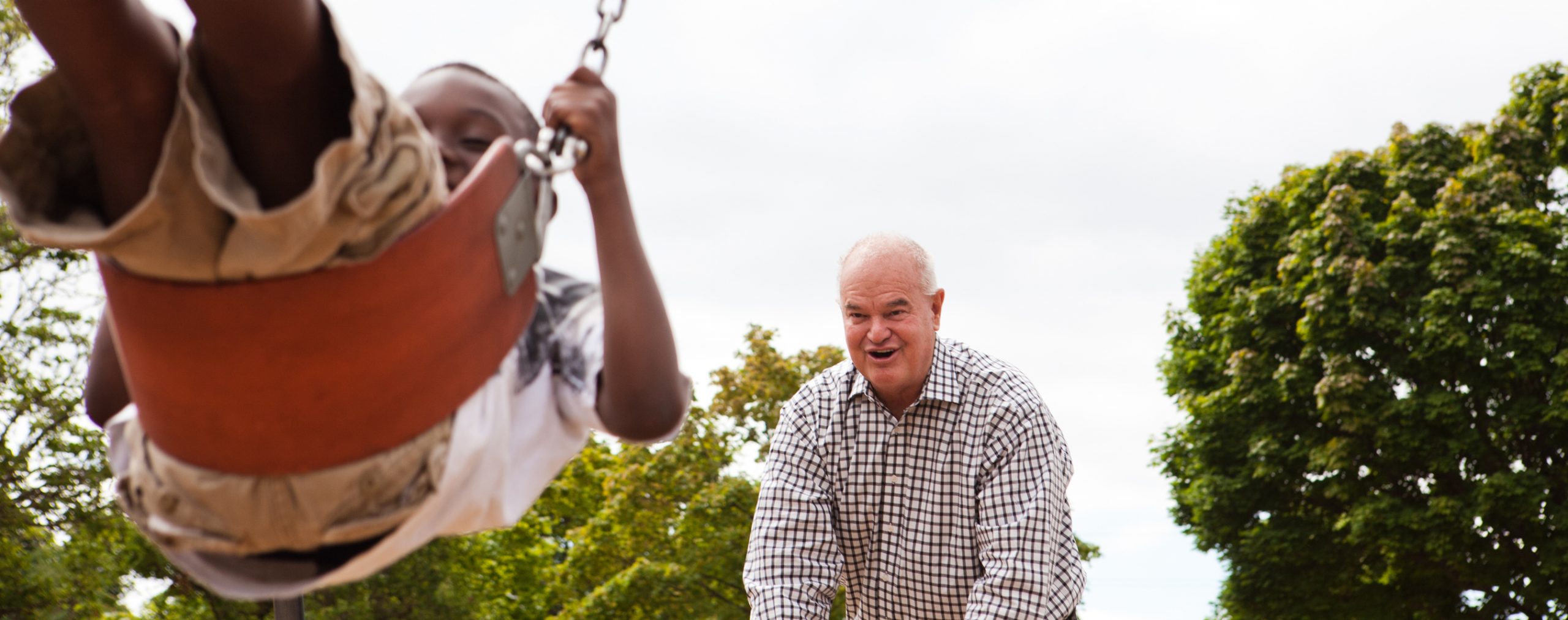
“Friends of the Children is the only program I’ve seen that is just as rigorous about finding youth facing the toughest challenges as it is in measuring outcomes,” said Woody McCutchen, an executive of the Edna McConnell Clark Foundation. “This is truly unique—a successful program that insists on serving our country’s most vulnerable youth.”
The reason Friends of the Children exists today is because Duncan Campbell, a Portland philanthropist who founded one of the first timber investment firms in the world, willed it into existence 25 years ago.
Given my childhood, everything starts with reality for me. Whatever I was going to do for children, I knew it had to be grounded in real data and real outcomes.
— Duncan Campbell
We met Duncan—”no one calls me Mr. Campbell”—on an April morning at the former Catholic girls school he bought and converted into Friends of the Children’s national headquarters. We entered his modest office space through an old hardwood basketball court scuffed from decades of hard-fought games.
When he jumped up from his cluttered desk to greet us, it was hard to imagine him as the intimidating high school linebacker he once was. At age 73, he’s neither hulking nor hunched. He recently lost 75 pounds and moves like a man who loves to dance (which he does), not one who spent years smashing into linemen and crunching quarterbacks. With his white hair, warm smile, and quick default to hugs, he is all grandfather these days.
Except for his taste in music. The day we visited, he raved about the Weeknd concert he’d just seen (“I love his music!”) and lamented that he’d recently given up good seats for Jay-Z because of a business trip he couldn’t avoid.
Duncan’s cramped office doesn’t display any of his many awards for his work with children or any memorabilia from his successful career as an entrepreneur. Two walls feature folk art, including a whimsical painting of a dancing bear (one of his nicknames) and a painting of an angel watching over children. Another wall holds a poster for a religious-art exhibit—a gift from a friend who knows that Duncan’s quiet Christian faith has been a driving force in his adult life.
The day of our visit, Duncan was preparing for meetings with a group of philanthropists interested in bringing Friends of the Children to the Nation’s Capital, so we began our discussion at 8 am. He had already been in the office for over an hour, scribbling ideas on Post-It notes and sticking them all over his desk.
Our conversation ranged far and wide—from nerdy topics like Friends of the Children’s ongoing longitudinal study of its children and its Efforts to Outcomes™ (ETO) performance-management system to the ways in which philanthropy has given his life meaning, purpose, and joy. But we started our discussion at the very beginning, with Duncan’s earliest memories and his very personal motivation for wanting to improve the life prospects of children like Nicky.
Yes, Duncan literally walked into a bar at age three, and it was no joke.
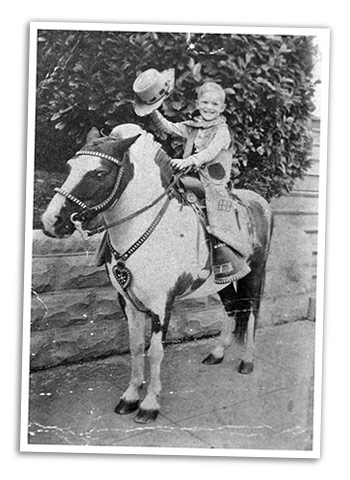
He had woken up in the middle of the night and couldn’t find his parents. So, fighting back tears, “I put on my pants inside out and started walking the streets all alone looking for them.” Eventually a police officer led him into a neighborhood bar. His parents were there, blithely drinking into the wee hours of the night.
A few years later, a stranger his parents dragged home from a bar fell asleep with a lit cigarette in Duncan’s bedroom. Duncan awoke when the stranger’s mattress was engulfed in flames. “I survived only because a passing cab driver saw the house on fire, smashed my window, and pulled me out.”
Duncan felt ashamed of his parents’ alcohol abuse and the fact that his father was incarcerated twice—not for his parental neglect but for writing bad checks. “I simply learned not to bring friends back to my house.” He found some stability by enrolling himself in Cub Scouts, earning his own money (caddying for rich folks at a golf course, working as a boat boy at the yacht club), playing football, and singing along with Smokey Robinson on a small transistor radio.
But the deprivation of his childhood left scars. “I got in trouble with the police once. I was part of a half-baked shoplifting ring made up of white-trash kids like me, and we got caught.” Duncan also had a temper, and he got himself expelled twice for fighting. (“In my defense, most of my fights were against people who were bullying other kids.”) His teachers saw a kid with a big mouth and quick fists. “They didn’t know about my home life and how it connected with my behavior.”
Fortunately, Duncan’s high school football coach, Bob Hull, took a different approach. Hull’s squad won the city championship when Duncan was a senior. But that trophy was nowhere near as valuable to Duncan as getting consistent encouragement from an adult, for the first time ever. His guidance counselor, Mr. McGuire, was another supportive adult. “He told me I had the ability to do anything I wanted in life.”
Duncan ran an ad with these words in his local newspaper. He got no responses, but that didn’t deter him. His grades earned him admission to college, and Duncan simply got more jobs (rental car agent, dishwasher, gas pump attendant) to pay for it.
After three years, he transferred to the University of Oregon Law School, paying for it with a job as a childcare worker. “I visited daily with 30 teenage boys locked up in juvenile detention. The job was as much a calling for me as it was a way to earn tuition money.” But it was also Sisyphean. No matter how much Duncan tried to help the boys make better decisions, most of them wound up getting in trouble again a few weeks or months after being released from detention. “Intervening that late in a child’s life felt futile.”
After college, Duncan went on to earn a law degree and became an attorney and accountant. Eventually, he decided to strike out on his own and start a timber-investment firm. “I would buy forestland on credit and then try to interest doctors, lawyers, and other wealthy people in buying units of land.” Although he had no trouble making cold calls and was comfortable with risk, he made few sales and ran out of money over and over again. Duncan’s wife, Cindy, was the firm’s part-time CFO. “We can’t keep doing this,” she told Duncan, panicked. Looking out of his office window, where he could see his childhood neighborhood across the Willamette River, he responded, “It’s all going to work out in the end.”
And he was right. Big time. He charmed the leaders of a large financial services firm to partner with his company. “That partnership opened the door to investments from brand name companies and pension funds,” he said. Instead of beating the bushes for $25,000 investments, Duncan and his colleagues at Campbell Global were now landing sophisticated, environmentally responsible timber deals worth hundreds of millions of dollars. The kid whose parents could barely afford their drinking habit became rich beyond his wildest imagination or aspiration.
Unlike those who create wealth and then search for a cause, Duncan knew exactly what he wanted to do with his new resources: make a meaningful, measurable difference for children growing up in circumstances like his own. “I’m the most cynical optimist you’ve ever met. Given my childhood, everything starts with reality for me. Whatever I was going to do for children, I knew it had to be grounded in real data and real outcomes.”
I had become a bit cynical about … systems like the one I was working in, which [wanted me to] ‘serve more children for less money and shorter periods of time.’
— Orin Bolstad
Clinical Child Psychologist
While he was building Campbell Global, Duncan also served as a child advocate on the Multnomah County Juvenile Services Commission. He took the volunteer role seriously, but it was frustrating. “I would hear all these poignant stories. But what was the real outcome?”
As a result, he knew he wanted to go deep once he was in a position to start making sizeable investments of his own. In 1983, he met child psychologist Dr. Orin Bolstad, the perfect person to help him figure out how.
At the time, Bolstad was the director of the Morrison Center, a nonprofit that offered mental health and social services to vulnerable youth. Bolstad appeared before Duncan and the Juvenile Service Commission to request funding for a pilot project aimed at kindergarteners. “It’s around five or six when kids are starting to go wrong,” Bolstad told the commission. “That’s when we as human beings begin to make wrong choices about how we deal with problems. Juvenile court gets to them a decade too late.”
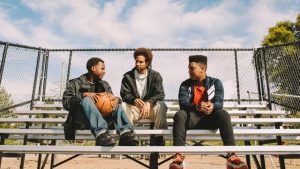
Bolstad was impressed with Duncan’s questions during the meeting and what he heard from Duncan when the two went to lunch together afterward. And the two shared a lot in common. Both men had put themselves through school by working with boys in juvenile detention, and they shared a lot of the same frustrations about the systems for helping high-risk kids. “At this point in my life, I had become a bit cynical about … systems like the one I was working in,” Bolstad recalled. “I was really cynical about ‘managed care,’ which translated as ‘serve more children for less money and shorter periods of time.’”
The Juvenile Services Commission didn’t fund Bolstad’s pilot program for kindergarteners, so Duncan decided to step in with his own funding. The pilot turned out well. By comparing participants with a control group of kindergarteners who didn’t have the benefit of the pilot, Boldstad demonstrated that young kids could learn valuable skills for navigating conflict.
That project and two other pilots Duncan helped fund gave the timber entrepreneur an appetite for more. “One day we were driving back from another pointless meeting, and Dunc asked me if I would consider leaving [my nonprofit] and come work with him to do something special, something different for children at risk,” Bolstad recalled. “I had a great job, a supportive board. But inside I knew that I was unhappy and impatient.” Bolstad decided to join Duncan and has never regretted it. The two continue to be great friends and colleagues to this day.
Bolstad’s original contract was focused on documenting what works for building resilience in kids growing up in circumstances like those Duncan and Nicky faced. So Bolstad went around the country to observe successful programs in action. When he would find a great model that might work in Portland, he and Duncan would make a visit together. It was the perfect kind of learning—the opposite of the long talk-fests in windowless conference rooms both men detested. “Dunc can hardly sit still in meetings,” Bolstad reported. “I watch him calculate on his sticky pads how many people are in the room, what their average salary is likely to be, and then total up the cost of the meeting. He’s all about focus and action.”
After seven months of these visits, Duncan committed $1.5 million to start Friends of the Children in a house he bought in his old neighborhood.
While every nonprofit and government agency was trying to serve more kids for less money, Duncan wanted to do the exact opposite: serve a small number of kids in a comprehensive, long-term way. Bolstad felt the same way. “I treated these kids for 15 years [in my previous role],” he said. “It’s pretty hard to [make] a dent in these kids’ lives with individual and family counseling two times a week…. We are talking about populations of young children who have a dad in prison, a mom who is a drug addict, and they’ve had four or five foster placements by the age of six. I had some success for moderate-risk kids, but not those with high risks.”
Twenty-five years later, Friends of the Children has grown from a small but ambitious program with three Friends mentoring 24 kids in Northeast Portland to a $25 million organization with 160 Friends mentoring 1,700 children across 15 sites, including one in Cornwall, UK.
Duncan doesn’t waver on accepting risk. He says, ‘I want to learn. If we’re not getting strong outcomes, we have to change.’
— Susan Walsh
Director of Research and Strategic Impact, Friends of the Children
Duncan began the program “with a keen interest in data and outcomes, more than most of my colleagues in mental health services,” according to Bolstad. So it’s no surprise that the organization has been an early adopter of The Performance Imperative, the Performance Practice (formerly PIOSA), and other learning-and-improvement materials developed by the Leap Ambassadors Community. It’s also no surprise that Friends of the Children has invested deeply in systems for monitoring how each child is progressing in the program. In 2016, Friends of the Children was honored by Social Solutions for the way it has used the company’s ETO™ performance-management system to make “a meaningful impact on their constituents.”
In addition to conducting third-party outcome evaluations every year, the organization is in the eighth year of a multi-site, longitudinal randomized controlled trial (RCT), funded by the National Institutes of Health, the Edna McConnell Clark Foundation, and the Robert Wood Johnson Foundation. “I was so proud of Duncan’s courage to invest in this study,” explained Dr. Susan Walsh, Friends of the Children’s national director of research and strategic impact. “He doesn’t waver on accepting risk. He says, ‘I want to learn. If we’re not getting strong outcomes, we have to change.’”
The first peer-reviewed analysis from the RCT, which focuses on a single cohort’s first five years in the program, was published in May 2017. “After five years of a 12-year intervention, we have learned that we’re exactly where we should be,” according to Walsh. “The study shows that youth are developing a foundation of social-emotional skills and support, which are protective factors … during adolescence and young adulthood…. Youth are behaving more positively in school and experiencing less trouble in school, as compared to a control group. Also, parents of the youth have more positive perceptions of their children’s behavior, a critical ingredient for healthy development.”
Although the outcomes that emerged during the children’s early years are encouraging, the effect sizes were similar to those found in studies of volunteer-based mentoring programs. The authors speculated that Friends of the Children’s impact may increase as the children in this longitudinal study get older. “It seems plausible that the most meaningful positive impacts of the program are likely to emerge when the children reach a point when good decisions regarding both their social relationships and the behaviors they engage in within them are absolutely critical to their long-term success,” they wrote.
Friends of the Children isn’t treating this first phase as a litmus test. “I think what we are doing is the best shot I can imagine for high-risk kids,” Bolstad said. “But we can’t just rely on anecdotes. We need hard data—and I think we will [have it] by the time the kids reach age 18. Proof will be in the pudding—or not. But keep in mind, we’re constantly making improvements. We have a great team of tinkerers … who never give up. Duncan is the model for that tinkering.”
Duncan’s tinkering doesn’t mean micromanaging. Every leader we interviewed said that Duncan has a fixed vision of success for the children Friends of the Children serves but is open to innovations in the model that have the potential for driving better outcomes. According to Terri Sorensen, Friends of the Children’s national president, “Duncan is an innovative entrepreneur and a risk taker. Because he started with nothing as a child, he had very little to lose. His tolerance for risk is very high.”
As a result of Duncan’s embrace of risk and pursuit of outcomes, Friends of the Children has made many course corrections over the years. When Friends of the Children began, the organization put a high priority on hiring Friends who came from the same neighborhoods as the kids they mentored. That hiring strategy made intuitive sense, but almost by definition it meant hiring a significant number of Friends who didn’t have a college education. “We learned that Friends with a college education were more focused on helping the children achieve in school, such as becoming successful readers by the end of third grade,” Duncan said. Friends with a college education also tended to be more rigorous in tracking their interactions with their children, a critical part of the organization’s performance-management practices.
So Friends of the Children came to require that all new Friends have a college degree. And through that course correction, Duncan discovered that demographics were less important than other factors. In the case of Nicky, the mentee who became a Friend herself, the mentor who had the biggest impact on her life came from a very different background. He was a young man who grew up in the Midwest and always wore a beat-up Stanford cap and sandals with socks. That man continued to play an outsized role in Nicky’s life even after he was diagnosed with cancer. “It was a huge struggle to watch him get sicker and sicker, but I never lost the feeling that we were blessed to have had him in our lives,” Nicky told Craig Borlase, who documented Duncan’s life journey in the 2016 book The Art of Being There.
In the early years, Friends would show up at a child’s house with clipboards and briefcases. From talking to families, Friends of the Children learned that these accessories sent all the wrong signals, so Friends no longer carry clipboards or briefcases when spending time with their children. Similarly, the organization bans Friends from talking about “clients” or “cases.”
At one point, a Friends of the Children chapter wanted to train social workers to provide mentoring. “Even though I feel strongly that Friends are friends and not social workers or teachers, we let them experiment. If it made us better, that would have been great. But it didn’t work out,” Duncan shared.
As Duncan was helping to refine the Friends of the Children model as an engaged founder, he was simultaneously learning about what it takes to be an effective philanthropist.
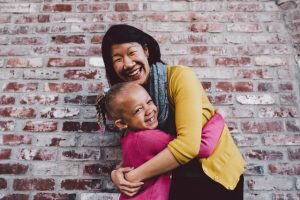
First and foremost, Duncan learned the preeminent importance of talent—that is, “getting the right people on the bus,” in the words of management guru Jim Collins. “Philanthropists need to seek out and support nonprofits that have highly qualified leadership, staff, and boards,” he told us. There is no substitute for “an inspired, motivated, high-performing team.”
Second, he learned how important it is to encourage and support grantees to commission rigorous, third-party evaluations. “As philanthropists, we are stewards of financial resources that should be granted … not based on stories but on real outcomes [assessed] by quality, third-party evaluation professionals,” Duncan said. He learned that well-conducted external evaluations have multiple layers of value for both donor and grantee. They can help attract other philanthropists looking for results. And if they’re used as a flashlight rather than hammer, they can help donor and grantee get even better at what they aim to do.
Third, he learned the importance of getting out into the field to experience the work he was funding. Even when he had a more-than-full-time job running Campbell Global, he took the time to get to know—and be open and accessible to—those he was funding and those they served. Duncan’s frequent, informal engagement with leaders, managers, frontline staff, and children has been his most valuable source of learning—not to mention a significant source of credibility with policymakers and his greatest source of personal satisfaction. A once-a-year site visit with a grantee might work for some donors, but not for Duncan.
Fourth, he learned the importance of expanding his investments beyond those for Friends of the Children and other direct-service organizations. Given that Friends of the Children was never going to be able to serve all 2.2 million children under six years old and living in extreme poverty, he realized he needed to invest in research and advocacy to marshal greater attention, resources, and will to solve the wicked challenge of intergenerational poverty. Duncan and Cindy helped endow a professorship and doctoral internship at Portland State University, as well as a social work research internship at Oregon State University, to expand knowledge across the mentoring field. Duncan also founded The Children’s Institute, a policy organization advancing early learning. “The Gates Foundation just invested in it,” Walsh reported. “It’s becoming a national leader.”
Fifth, he learned a great deal about collaborating with other donors who have similar philanthropic passions. While Duncan has provided $10 million for Friends of the Children’s Portland chapter and its national office, those gifts were primarily for seed funding in the early years and helped build the organizational capacity for growth. “I learned early on that this had to be bigger than just me,” Duncan said. “It had to take root in the community.”
Today, Duncan spends the majority of his work time recruiting new donors. For many grantmakers, taking on the additional role of grant-seeker is a painful chore. For Duncan, it’s energizing. “I thrive in these situations…. My whole business was based on cold calls, so I’m very comfortable getting a lot of ‘nos’ in search of that one ‘yes.'” In several cases, those who say “yes” have become lifelong friends of Duncan’s and long-term champions for Friends of the Children. Twenty years ago, Duncan met Mike Murray, a philanthropist of deep faith who struck gold twice in his business life, once working for Steve Jobs at Apple and then with Bill Gates at Microsoft. Murray and his wife, Joyce, decided to start a new Friends of the Children chapter in Seattle to help the organization prove that it was capable of being replicated with fidelity in other major cities.
While many potential donors were hung up on the high unit costs, Murray immediately grasped that you can’t help “an extremely at-risk child ultimately become a self-reliant member of society” on the cheap. To date, the Murrays’ family foundation has provided close to $3 million in grants to support the Seattle chapter.
Murray admitted that he has been disappointed with the number of “potential donors who would give us a patronizing ‘pat on the back’ for the ‘really wonderful program you’ve started up’” and then walk away from funding the program because of its costs. But he is deeply grateful for his long engagement with Friends of the Children and Duncan. “This work touches my soul,” he said.
Duncan, too, has had his share of disappointing conversations with potential donors who care about children but are looking for less-expensive solutions. However, the optimist in him has won out over the cynic. “I’m starting to see a real change in funding. It used to be that foundations needed to invent it themselves and were quick to walk away from programs that worked. But now I’m seeing more and more funders realizing that if something works, you need to do all you can to help sustain it.” He is particularly optimistic about Social Impact Bonds, which provide public and private resources to organizations that deliver on their outcome promises, and aggregated funding models such as Blue Meridian Partners, which has pooled more than a billion dollars for high-performance organizations serving children and families.
By any measure, Duncan and Nicky both drew short straws as children. But neither lives with regrets. In fact, it’s quite the opposite. Both know that their childhood experiences—the good, the bad, and the ugly—powerfully motivated them to pour themselves into helping other children with similar life stories. And doing so has brought great gifts to their lives. As Duncan said in 2009 when he accepted the prestigious Purpose Prize, “The last 15 years of my life have given me more meaning, satisfaction, and contentment than I ever could have imagined.”
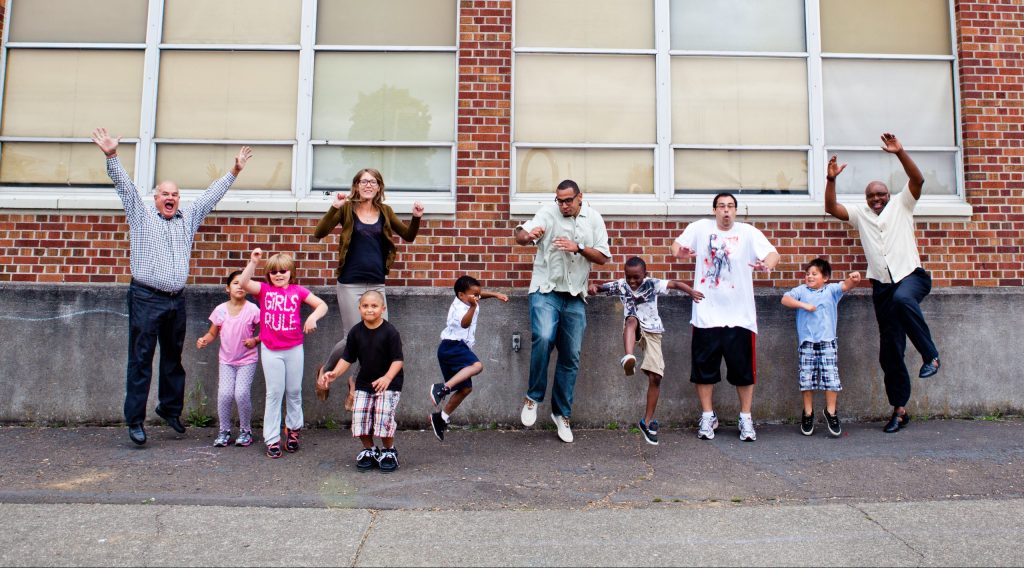
Do you want to learn more about how donors and grantees can work together to enhance their effectiveness? Read about Funding Performance here, and let us know your thoughts.
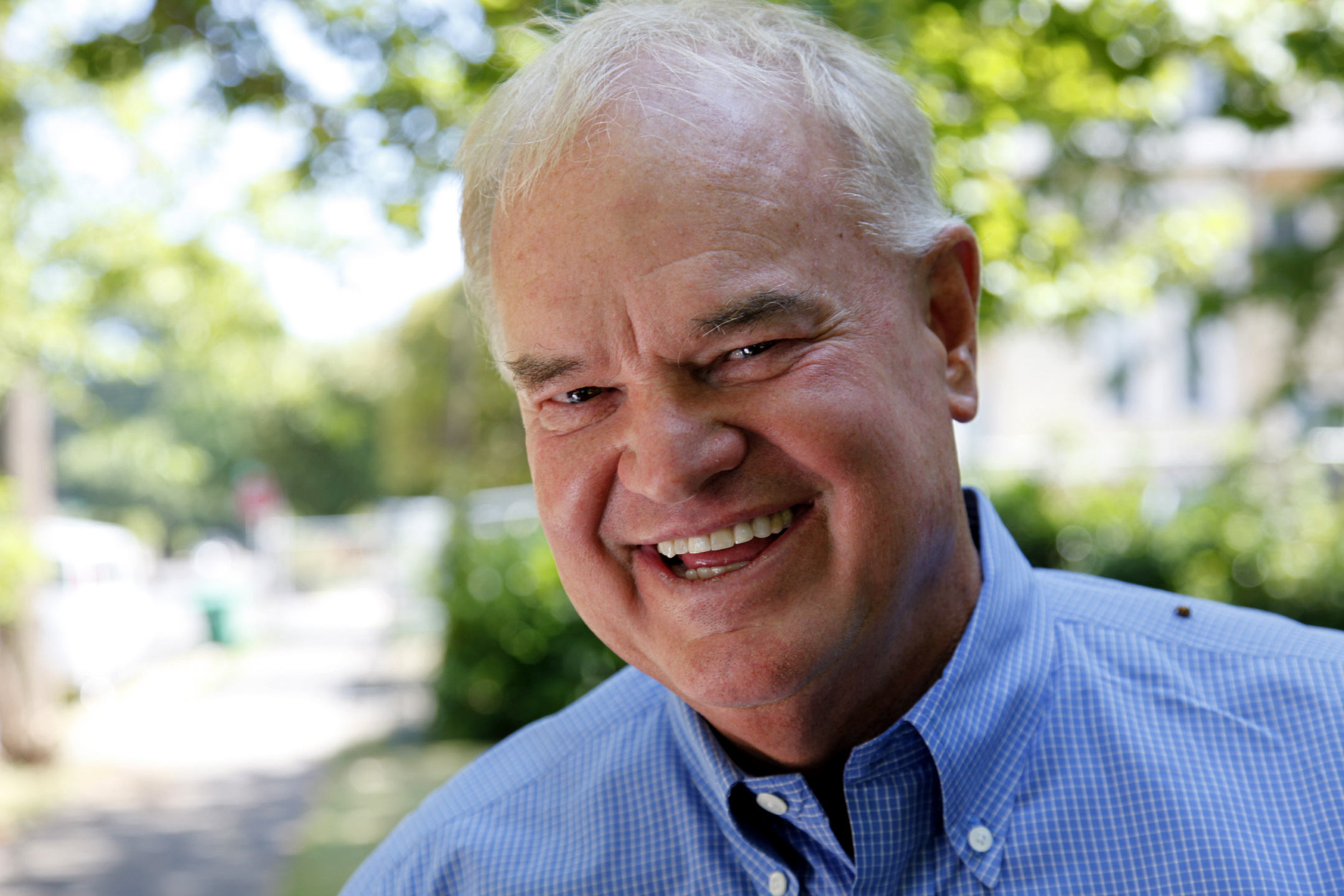
Duncan Campbell
Age: 73
Home: Portland, OR
Family: Cindy Campbell, wife; three adult children; six grandchildren
Mission: Break the cycle of intergenerational poverty
Source of wealth: Founder of Campbell Global, a timber-investment company. (He sold the company in 1991.)
his document, developed collaboratively by the Leap of Reason Ambassadors Community (LAC), is licensed under a Creative Commons Attribution-NoDerivatives 4.0 International License. We encourage and grant permission for the distribution and reproduction of copies of this material in its entirety (with original attribution). Please refer to the Creative Commons link for license terms for unmodified use of LAC documents.
Because we recognize, however that certain situations call for modified uses (adaptations or derivatives), we offer permissions beyond the scope of this license (the “CC Plus Permissions”). The CC Plus Permissions are defined as follows:
You may adapt or make derivatives (e.g., remixes, excerpts, or translations) of this document, so long as they do not, in the reasonable discretion of the Leap of Reason Ambassadors Community, alter or misconstrue the document’s meaning or intent. The adapted or derivative work is to be licensed under a Creative Commons Attribution-NoDerivatives 4.0 International License, conveyed at no cost (or the cost of reproduction,) and used in a manner consistent with the purpose of the Leap of Reason Ambassadors Community, with the integrity and quality of the original material to be maintained, and its use to not adversely reflect on the reputation of the Leap of Reason Ambassadors Community.
Attribution is to be in the following formats:
“From ‘Meaning, Purpose, and Joy: A Profile of Duncan Campbell,’ developed collaboratively by the Leap of Reason Ambassadors Community, licensed under CC BY ND https://creativecommons.org/licenses/by-nd/4.0/. For more information or to view the original product, visit https://leapambassadors.org/resources/building-case-funders/duncan-campbell.”
The above is consistent with Creative Commons License restrictions that require “appropriate credit” be required and the “name of the creator and attribution parties, a copyright notice, a license notice, a disclaimer notice and a link to the original material” be included.
The Leap of Reason Ambassadors Community may revoke the additional permissions described above at any time. For questions about copyright issues or special requests for use beyond the scope of this license, please email us at info@leapambassadors.org.
We use cookies for a number of reasons, such as keeping our site reliable and secure, personalising content and providing social media features and to analyse how our site is used.
Accept & Continue